A helicopter technician was sitting atop Cutlass 460, working with 115 volts, when the wave rose from the Atlantic and crashed into the secured helo.
The crest drenched the chained SH-60 Seahawk and startled the tech, as well as another sailor sitting in the cockpit with the door ajar on the destroyer Winston S. Churchill. Both walked away uninjured, but the squadron found it troubling enough to report it to higher-ups. Previous waves had damaged helicopter engines and nearly washed sailors overboard, a common hazard on a destroyer flight deck that rides only 13 feet above the waterline.
"History has demonstrated that the hull design and low flight deck of the [Arleigh Burke-class flight IIA destroyer] adds new challenges to an inherently dangerous … environment," the commander of Helicopter Anti-Submarine Squadron Light 46 wrote in the warning message. "Water over the deck on DDG's is a known hazard and we have been lucky so far that no -one has been hurt. We should be proactive now to incorporate deck operating limitations before an injury or death ultimately dictates it."
The incident occurred on October 14, 2004, nine years before a wall of water swept over the flight deck of the destroyer William P. Lawrence and struck a whirling helicopter on the flight deck. The force shattered the MSH-60S Knighthawk's tail rotor assembly and the overhead rotors spun wildly, ripping the helicopteritself apart in seconds before a horrified crew.
The fuselage of Indian 617 hurtled into the Red Sea, taking the pilots, Chief Warrant Officer 3 Jonathan Gibson and Lt. Cmdr. Landon Jones, with it, leaving only pieces of their helmets and breathing apparatuses strewn about the mangled flight deck.
The dangers of wave impacts on frigates and destroyers were reported in 134[exact number] hazard reports filed between 19835 and 201343, HAZREPS reports obtained by Navy Times in a 2-month-long investigation and presented publicly for the first time. These messages are chock full of warnings from aviators that presageforeworn the tragedy of Sept. 22, 2013.
Indeed, the William P. Lawrence accident was the third time in 2013 that a destroyer's flight deck took a severe hit from a wave; a crest damaged a helicopter's the rotors in January and another swept a sailor overboard in March. The sailor was recovered with heavy bruising and found to be suffering from exposure after 30 minutes in the water.
These risks are heightened when a ship moves at high speed during the helicopter landing, a motion that causes the hull to sink lower in the water; Navy engineers estimated that the William P. Lawrence's flight deck was only 7 feet above the water when the fatal wave crested over.
In the wake of the tragedy, officials have grappled with the troubling questions about how the Navy failed to discern and mitigate a hazard that's been widely known and reported by commanding officers since the arrival, the days three decades ago, of when Arleigh Burke-class destroyers arrived in the fleet.
"One can only read so many general CO conclusions of, 'We were lucky, this could have been much worse, and we should address it now,' before becoming even more troubled by the sequence of events that led to INDIAN 617 being lost at sea," Cmdr. David Burke, CO of Helicopter Sea Combat Squadron 6, wrote in the safety investigation report into the mishap, obtained by Navy Times. "Naval Aviation saw this hazard early, identified it early, and reported on it repeatedly."
The Navy acknowledges that officials failed to adequately address the risk of flight deck washout, but said they have taken steps to prevent it from happening again. The Naval Safety Center has hired a lessons-learned manager to send out share mishap information, flight deck rules have changed to take into account sea state and waves, and ship crews are being trained on those new rulesthem.
"The dangers associated with seawater intrusion over the flight deck of DDG 51/79 class ships are well known," said Navy spokeswoman Lt. Cmdr. Nicole Schwegman. "Navy leaders concluded that we need to manage these types of risks better; yet in the case of William P. Lawrence we did not and two men were lost."
Naval Air Systems Command, which sets the rules for flight operations, and the Naval Safety Center, which collects and analyzes operational risk reports, declined requests for interviews on the Lawrence tragedy and the changes implemented since.
"The Naval Safety Center has worked aggressively to improve the sharing of hazard and mishap information," an NSC spokeswoman said, including hiring the lessons-learned manager and establishing a safety management system across the fleet. NSC declined to address the findings of the safety investigation report into the Lawrence tragedy, saying these reports are "privileged and are protected from public release" to encourage witnesses to be open and forthright with investigators.
"The goal of safeguarding this information from the public domain is to ensure future investigations are able to accurately determine root causes — and, ultimately, save lives. Violating this process by publishing Safety Investigation Report (SIR) details compromises our ability to obtain the candid participation we need and rely on from Sailors and Marines."
Debate continues into the responsibility of the Lawrence's then-commanding officer, Cmdr. Jana Vavasseur. Adm. Harry Harris, then-head of Pacific Fleet, faulted her for taking "unnecessary risks" by maneuvering at high speed in choppy seas while the helo's blades were still turning.
But
Vavasseur was counseled but not
never
reprimanded
disciplined
in the aftermath
and in December
has continued her career. She
was selected for the rank of captain
in December
May
.
However, following public outcry from the pilots' widows, Navy Secretary Ray Mabus launched a review and pulled her name from the O-6 selection list in May.
Theresa Jones, Landon Jones' widow, faults the Navy for not protecting her husband and Vavasseur
ship commanders
for not slowing down for the few minutes it
takes
would have taken to shut down the helo, which was only to be aboard the destroyer long enough to deliver flu vaccines and pick up crewmembers
shots
.
[TK update from SECNAV's office]
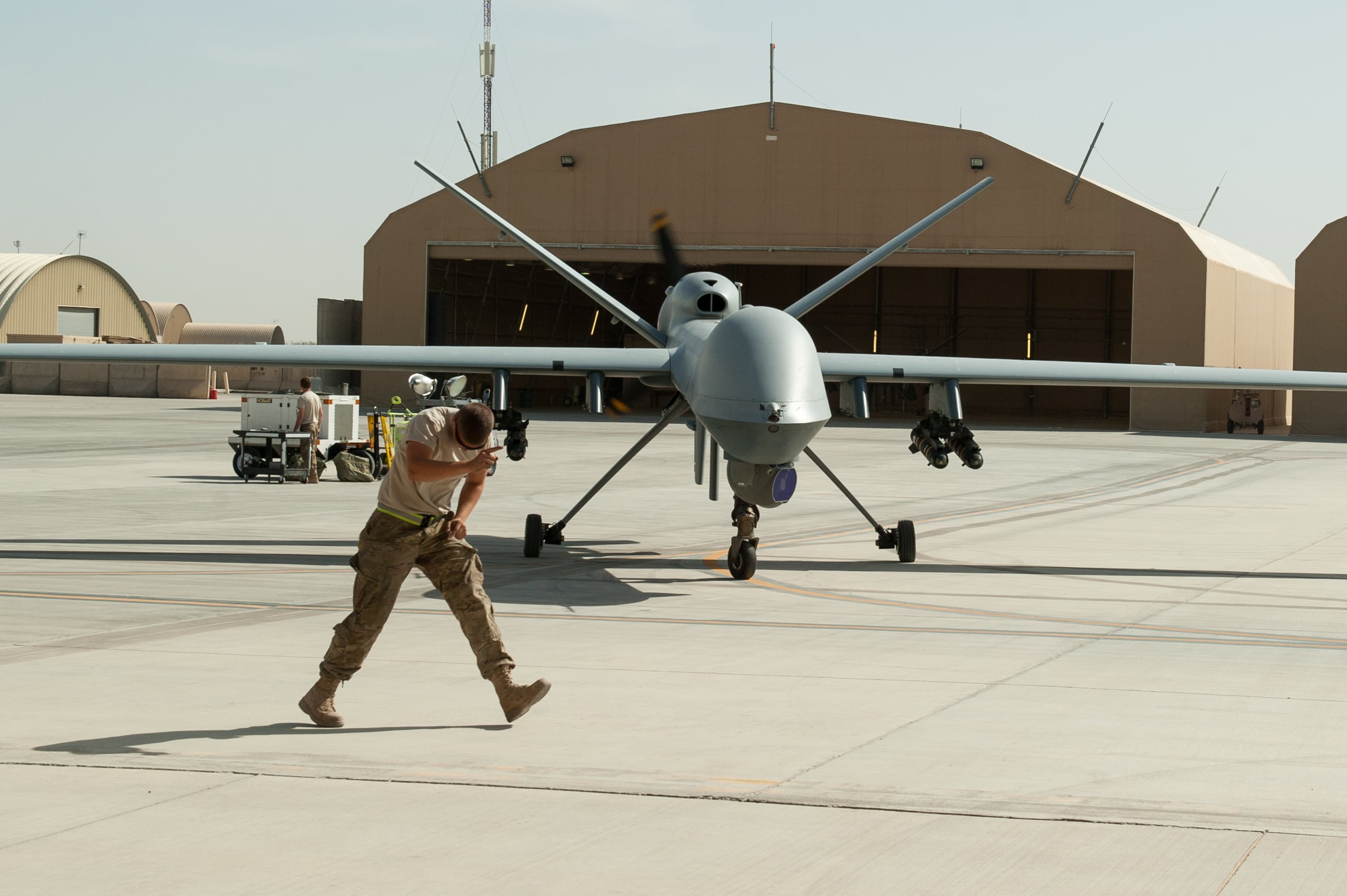
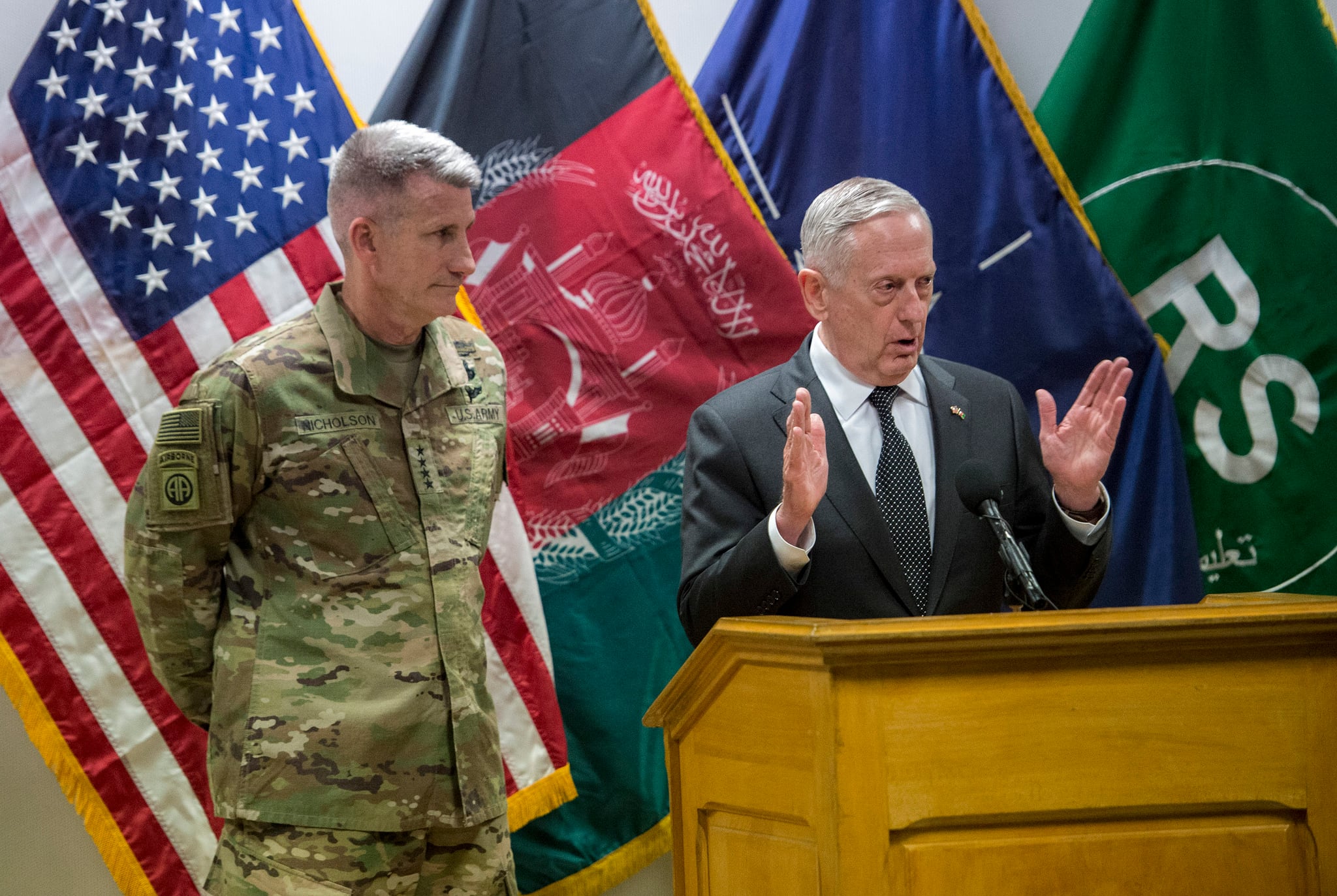
The morning of Sept. 22 was breezy, and the skies overhead were a brilliant blue. For the watchstanders on the bridge of the William P. Lawrence, transiting with the Nimitz carrier strike group through the Red Sea, visibility was nearly unlimited.
Seas were at about six feet, choppy for a 500-foot-long destroyer
ship
, and the northwesterly winds were blowing at 28 knots.
The Lawrence had been with Nimitz since January 2013 as part of a regular 5th Fleet rotation, and on this bright day she was alongside the fast combat support ship Rainier, taking on fuel and supplies.
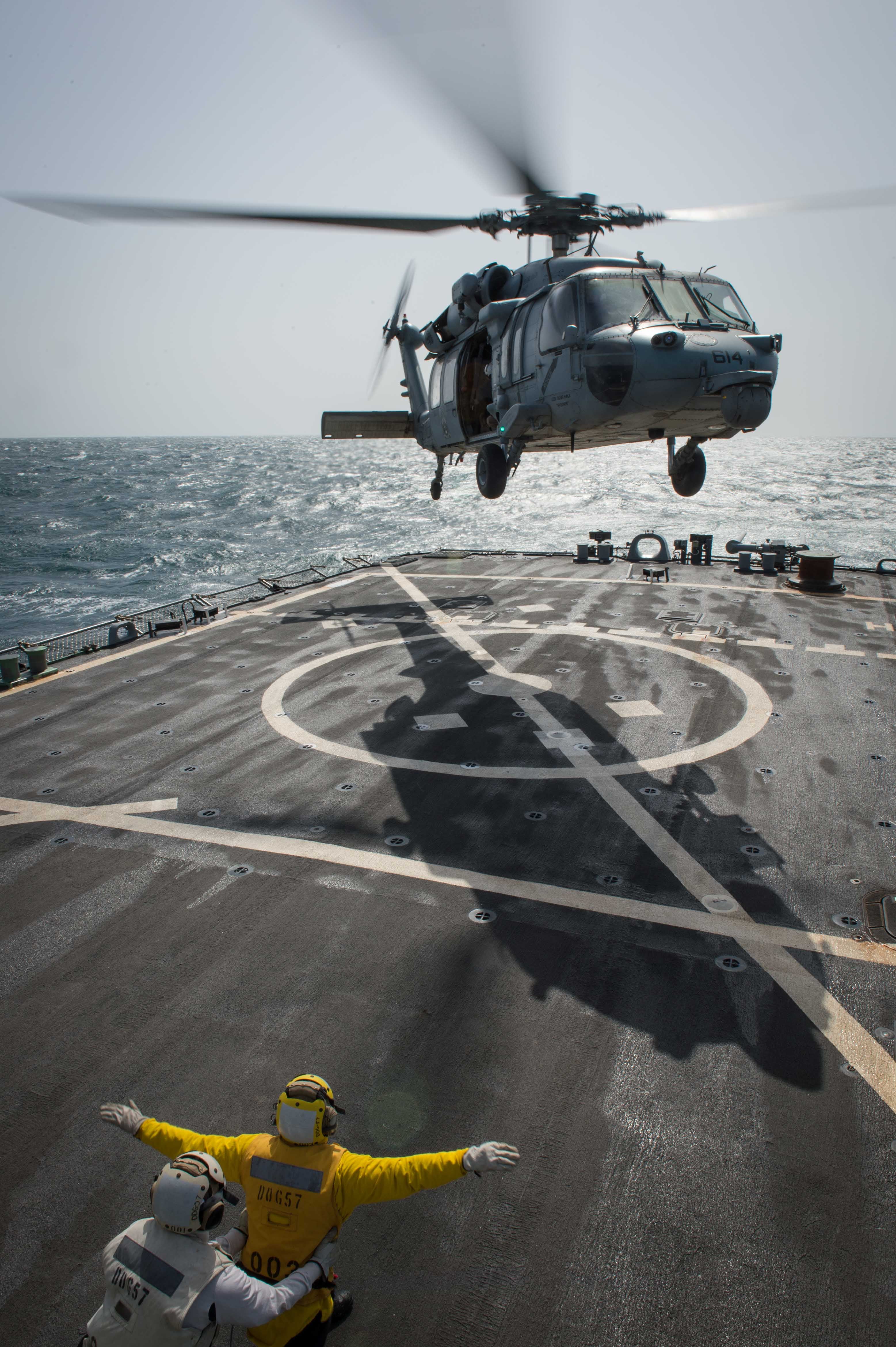
Before recovering a helicopter, a ship locks in a course and speed that stabilizes the wind and reduces the ship's rolling, and sets a "green deck." These maneuvering restrictions are lifted once the helo is chocked and chained and the ship sets "red deck." The Lawrence accident occurred while the ship was maneuvering at "red deck," with the helo's rotors still turning. Here, an MH-60S prepares to land aboard the destroyer Mitscher in February.
Photo Credit: MC2 Anthony R. Martinez/U.S. Navy
The command cadre on the Nimitz was
a
harried by a Russian destroyer tailing the group. So, after the Lawrence finished refueling, the sea combat commander ordered her to detach at "best speed" to relieve the destroyer Stockdale in the carrier's screen about 30 miles to the south. Stockdale was going to rendezvous with Rainier to begin her own underway replenishment.
On the way, the Lawrence planned to land Indian 617, one of the helicopters with a two-aircraft detachment from HSC-6 "Screamin' Indians" deployed with Rainier, which was delivering flu vaccines
shots
.
With Jones flying and Gibson co-piloting, the plan was to make a quick drop and pick up three Lawrence sailors in time for the destroyer to meet up with the Nimitz.
But things were running behind. Lawrence wasn't ready for flight quarters and the delays were starting to grate on 617's crew.
"We were frustrated during our flight with many things; with the Nimitz for giving us an unrealistic timeline to meet, flight deck crews on other ships for slow movement and specifically, the Lawrence for not being at flight quarters and ready to accept us for our deck hit," 617's crew chief said in his official statement for the command investigation.
. [WHO?]
At 12:25 p.m. local time, 617 received flight conditions and requested to land, but they were waved off when winds shifted.
A ship must maneuver to ensure that pitch and roll, and most importantly the winds across the deck, are within a comfortable envelope to land the helo, per the Naval Air Training and Operating Procedures Standardization, NATOPS, as they existed on Sept. 22, 2013.
Once the ship is in those parameters, the skipper can order "green deck," which locks in a steady course and speed until the helo has landed. Sailors on the flight deck rush out to chain the helo's wheels to X-shaped padeyes and to
the
keep the wheels from rolling with chocks, heavy rubber wedges
known as chocks
. Once that's done, the CO can set "red deck," which allows the ship to maneuver relatively freely, so long as caution is taken while the helicopter is in its shutdown phase and flight deck crew are on the weatherdeck.
After the first attempt, Vavasseur conferred with her bridge team to get the winds right.
Generally speaking, the wind envelope for landing helos is permissive as compared to that for landing fixed-wing aircraft on a flattop, and surface warfare officers often have a range of options for getting the wind in parameters. In this case, the bridge team opted to order top speed, 30 knots, driving with the wind to reduce the apparent wind felt on the ship. This course and speed allowed the Lawrence to land the helo and continue toward
s
the Nimitz.

The helo landed at 12:37 and was chocked and chained to the deck.
The crew chief noted the Lawrence's wake at the time appeared to rise to flight deck level, without excessive motion. An aircrewman and a hospital corpsman disembarked 617 to offload the flu vaccines onto the ship.
Once the helo was chained in place, the ship set
at
"red deck" and Vavasseur decided to change course to get on station.
"We remained at full power and at speed since it was getting us to station, and I told the [officer of the deck] to go ahead and start coming right while we were at red deck, but 'gently' at that speed," Vavasseur wrote in her official statement, which was not released publicly
ally
with the investigation.
The OOD ordered the rudder over three degrees to come to a southerly course, a course change that even in stable seas typically causes the ship to heel to one side. That fateful move put the seas on the ship's quarter while at top speed, heightening the ship's instability and causing it to roll heavily in the swells. Once on course, the ship took a 12-degree roll, according to the reports.
A 12-degree roll can cause things to slide and sailors to lo
o
se their footing; it's to be avoided when people are on the flight deck with the nets down,
and
especially with
while
rotors spinning only feet above their heads. It is standard practice to clear the weather decks of personnel when the ship is in seas that would cause 12-degree rolls.
Three Navy sources, including a former destroyer skipper, told Navy Times that putting the seas on the quarter at high speeds made the ship unstable, creating a motion that kicks the nose and the stern left and right as the ship lumbers up and down waves; the most stable course is with the seas off the bow.
The bridge team decided a better course to station would be 5 degrees to the right. The OOD ordered another course change at 2 degrees rudder, and that's when disaster struck.
At 12:44, the ship rolled 13 degrees to port, then 17 to starboard as it lumbered
rocked
through the quartering seas
off its quarter
.
Indian 617's crew chief was helping an airman load two, 250-pound aircraft jacks when the rocking began.
"I then realized we would not be able to hold the jacks
hacks
in NH617. I then pushed the airman out of the way of the falling jacks and fell to the flight deck," he recalled. "The jacks fell on my leg. I then heard a loud popping sound."
"Holy s---!" yelled the quartermaster of the watch on the bridge.
The QMOW was staring at the flight deck video monitor in horror. He saw Indian 617 buckling on the flight deck, straining the chains holding it to the deck.
"When I looked up, I saw very clearly that the helo was out of control, and I could see that there had obviously been a wave that hit the deck because the water was dissipating," Vavasseur wrote in her statement in the investigation.
One of Indian 617's aircrewmen had just taken float coats and cranials to the hangar and was walking back to the helo.
"I got a couple steps onto the flight deck when a wall of water above the rotor blades hit NH617," he said.
The helo tipped over and the whirling blades hit the deck, shuddering the fuselage.
Indian 617 was ripping itself apart on the flight deck. According to the command investigation, the impact of the water caused the tail rotor assembly to disintegrate and the overhead rotors to flex and strike the flight deck.
The dangerously unstable rotors caused the violent vibrations that tore the helo off its moorings.
"I turned around and pushed all personnel behind me back into the hangar," the aircrewman recalled, according to the command investigation.
[report].
He watched the fuselage rotate 90 degrees, sending the helo's nose over the edge of the fight deck. With the tail rotor destroyed and the helo unchained, there was nothing to counterbalance the torque of the spinning overhead rotors. This caused the helo to spin freely on the flight deck.
When the door came into view, witnesses in the hangar saw chaos in the cockpit.
"I noticed the left pilot door was open and saw Mr. Gibson being thrown around violently inside the cockpit," the aircrewman recalled.
When the helicopter's tail struck the ship, it broke off from the fuselage [THE TAIL BROKE OFF IMMEDIATELY AFTER THE WAVE HIT].
The ship
took a
rolled again and Indian 617's fuselage, with Jones and Gibson inside, tumbled off the William P. Lawrence, never to be recovered.
The aircrewman then saw the crew chief, whose leg had been shattered
broken
underneath the toppled helicopter,
. He was
lying on the deck.
He raced out to the mangled flight deck to render aid. Amid the wreckage strewn across the deck, he saw Gibson's breathing device and visors from the pilots' helmets.
On the bridge, Vavasseur sprang into action. She ordered the ship to slow and come about, as the helo crash alarm blared.
A seaman apprentice who had just been relieved off of watch ran to the bridge wing and peered through the large binoculars bolted to the deck to see if he could spot the helo.
"I saw nothing, just a few dye markers in the water with no personnel around," he said. "May God be with those pilots."
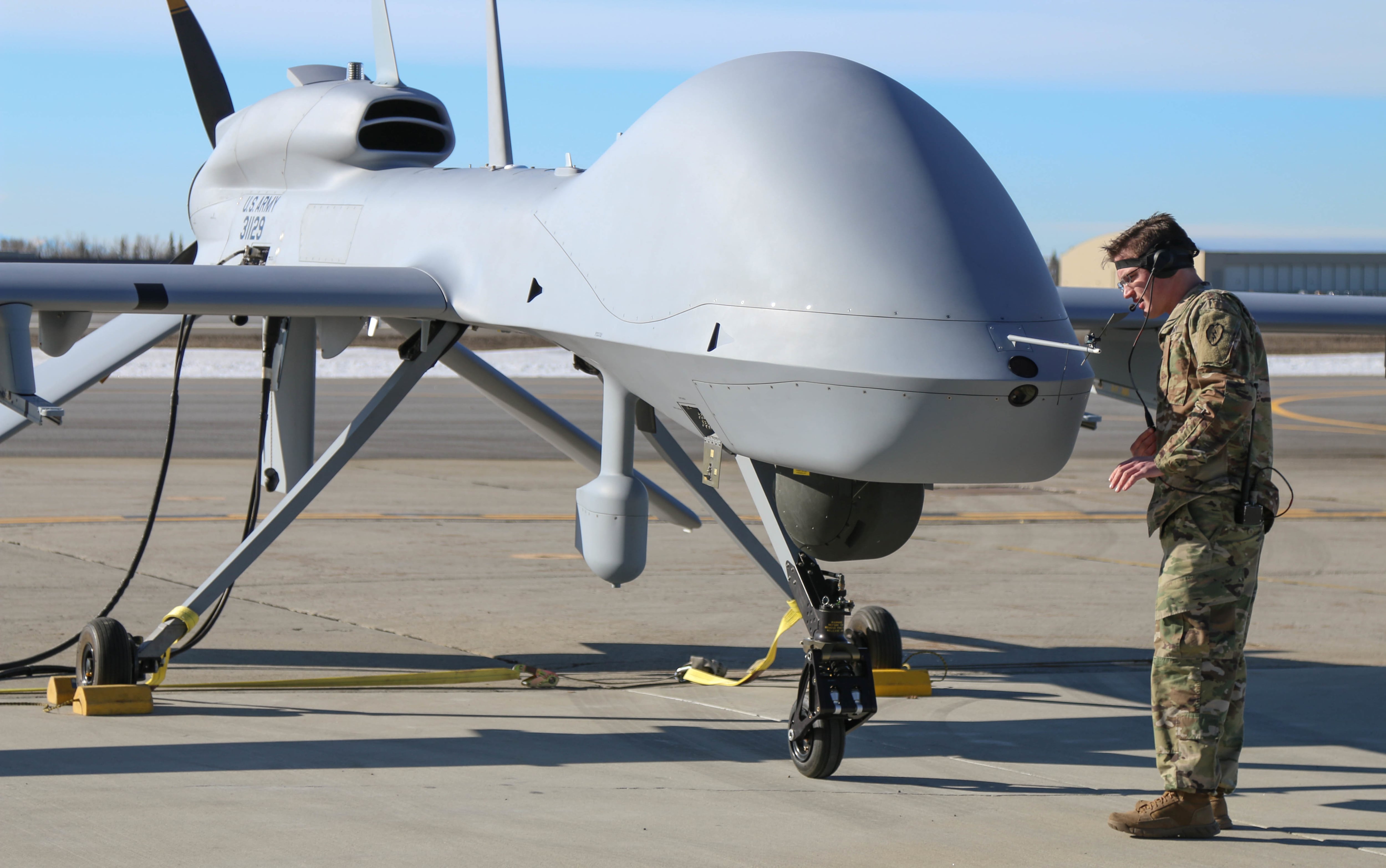
The loss of Indian 617 set off an intense search and rescue operation that involved the entire strike group. It was called off 26 hours later when no trace of the two pilots or the aircraft was found. A week later, the Nimitz
Lawrence [
I believe Nimitz held the memorial MM/changed]
held a memorial for the pilots.
The deaths of Jones and Gibson have
has
remained a stinging loss. The incident
It has
dredged up long-standing grievances among helicopter pilots, who feel that surface warfare officers are sometimes cavalier while landing helicopters, a routine but dangerous evolution.
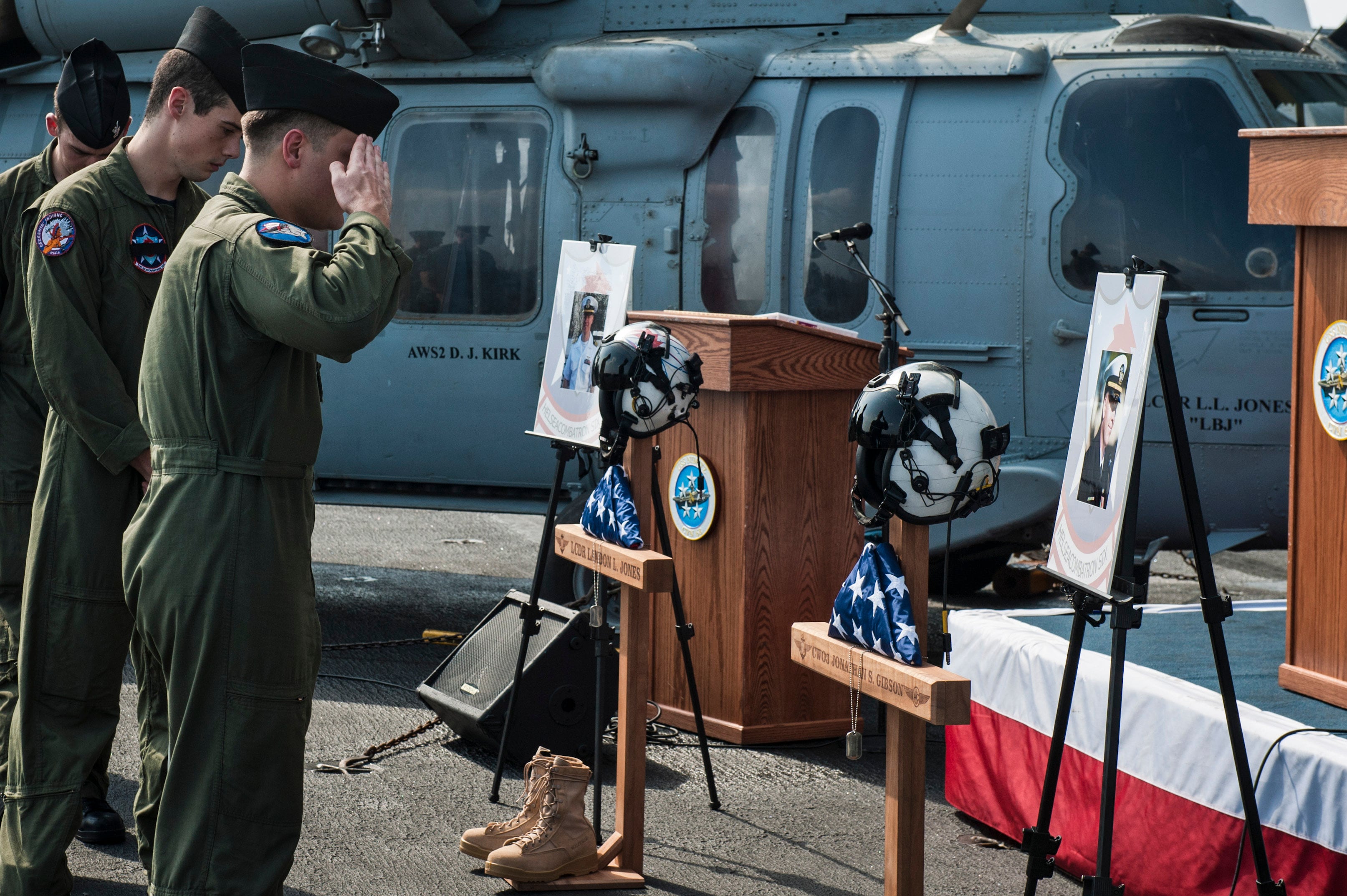
Aircrews pay their respects at a memorial for Jones and Gibson held aboard the carrier Nimitz on Oct. 1, 2013, in 5th Fleet.
Photo Credit: MC3 Raul Moreno Jr./Navy
Adding insult to injury, for some, was news later that Vavasseur was continuing to be promoted.
The investigators largely cleared Vavasseur and her crew
of driving recklessly
, concluding that while quartering seas made the ship unstable, "neither the initial choice of course nor the decision to come to course 195 [degrees] were a result of negligence on the part of the crew of WPL," according to their report.
Higher-ups disagreed.
The aviation mishap board assigned to conduct the safety investigation report cited a "complacent attitude toward possible hazards to the [mishap aircraft] and flight deck during 'red deck.'" Vavasseur and the OOD "remained at flank speed in order to more quickly take ordered station and to remain within the wind envelope for launch," and in so doing, "decreased the stability of the ship and increased the likelihood of a wave impact on the flight deck."
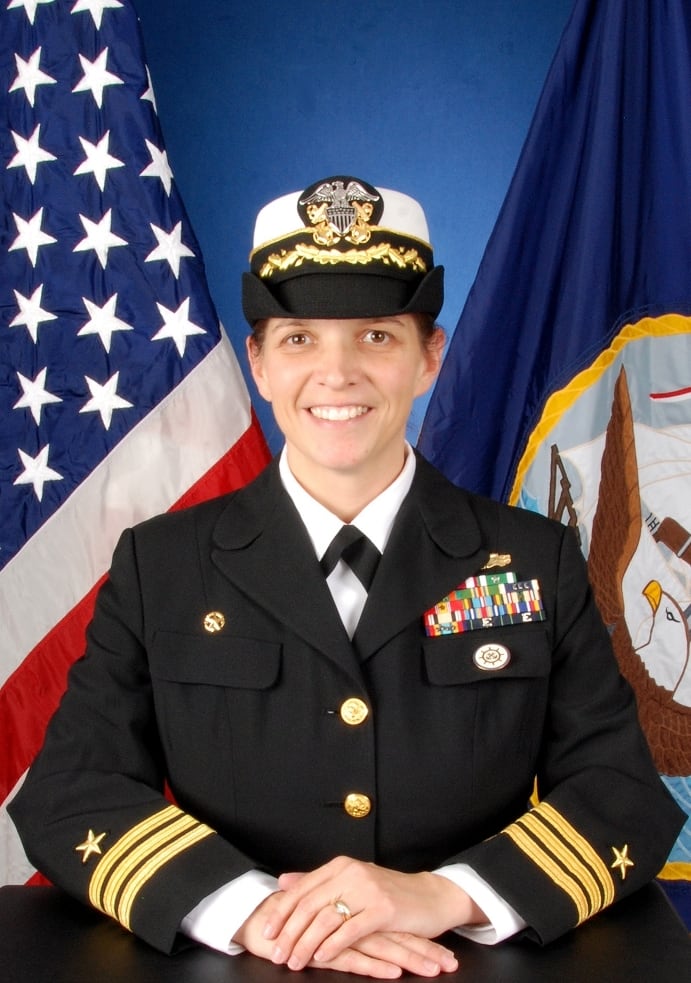
Cmdr. Jana Vavasseur, the CO of the William P. Lawrence at the time of the mishap, was cited for taking unnecessary risks while Indian 617 was shutting down. Vavasseur was counseled for this, but not formally reprimanded and has continued her career.
Photo Credit: U.S. Navy
In the April 2014 command report, Harris also blamed the Navy for failing to prevent this kind of mishap, writing that "WPL's Commanding Officer was ill served by us, who did not provide her all necessary information and training for a thorough operational risk management calculus."
The ship's choice of course and speed contributed to the rocking that exposed the flight deck to waves, say experts familiar with the case
say
. But many also question big Navy for the rules that govern flight operations, the NATOPS
that's
overseen by naval aviation leaders.
The NATOPS at the time said that care needed to be taken with a helicopter spinning on deck, but in the same instruction it also said that "once chocks and chains are installed, ship is free to maneuver."
For Vavasseur's defenders, that guideline absolves her and her team of responsibility.
The instructions given ship handlers were inadequate and even hazardous, said a former Navy official with direct knowledge of the investigation, who spoke on condition of not being named.
[OK?]
The
said the
body of evidence
, who pointed
points to the repeated warnings from pilots about low-freeboard flight decks, he noted.
[OK?]
"We have been flying helos in all conditions and in all speeds and areas of the world, and this is first time there was a fatal accident, and the CO of the ship is supposed to know, somehow, that maybe NATOPS is wrong?" the official said. "If a unit does what big Navy tells them to do, to the letter, and bad things happen, then someone beside
s
the unit following lawful and legal orders and procedures needs to step up."
The safety investigation report found a systemic failure, concluding that aviators were allowed to fly with conditions that many had warned against and urged to be changed.
"HAZREPs and [safety investigation
incident
reports] dating as far back as 1985 recognize and document conditions that cause deck wetness, damage to FD nets and ocean waves/swells impacting aircraft on the FDs of low-freeboard DDGs and FFGs," the mishap board ruled.
Between 1985 and January 2013, just six months before the Lawrence incident, the Navy documented five mishaps involving waves washing over destroyer and frigate flight decks. And in the decade before, nine HAZREPs were reported to the brass about waves damaging helos and flight deck nets.
Between 1983 and the Lawrence incident, at least 13 HAZREPs were reported to the brass about waves damaging helos and flight deck nets aboard destroyers and frigates
with a low freeboard
.
Many reported their concerns about destroyer flight decks, and whether
or not
the rocking and waves caused damage. Indeed, between January 2003 and March 2013, just six months before the Lawrence incident, the Navy documented at least nine mishaps involving waves washing over destroyer flight decks.
A 2005 white paper by Naval Surface Warfare Center Carderock Division addressed maneuvering limitations to prevent deck wetness, the SIR said, "but any changes implemented by NAVSEA or NAVAIR appear to have proven inadequate in mitigating this hazard."
Despite the recommendations, the investigation found, NAVSEA and NAVAIR never published quantified parameters for this type of ship handling, and there was no guidance beyond using "caution" when maneuvering with a whirling helo on deck.
Officials also found that SWO training on flight operations focused solely on creating a safe flight envelope for launch and recovery, but no restrictions on what to do afterward.
[SENTENCE MISSING WORD]
In fact, the William P. Lawrence
tragedy
wave strike mishap was the third that year reported in the fleet
n as many years
, "yet current versions of H-60 NATOPS publications ... do not adequately address these documented hazards," the report said.
The report slams the Naval Safety Center for missing trends that presaged the disaster. The NSC is the service's central repository for reports on unsafe conditions and responsible for analyzing them and promoting safe practices.
"Given the history of documented hazard and mishap reporting on flight deck water intrusion incidents, the [aviation mishap board] determines that Naval Safety Center needs to have a better trend recognition program to communicate its findings to NAVAIR, NAVSEA and the aviation and surface communities," the report concluded.
Three endorsing officials on the SIR
AMB report
pointed out an issue that the Navy has not publicly addressed: Why does "red deck" mean good to go?
"This mishap must shift the perspective of what risk is latent and unable to mitigate, and what risk can be addressed and diminished," wrote Burke, the HSC-6 CO. "Paradigms must change. RED DECK can no longer simply mean FREE TO MANEUVER."
The general attitude is that the ship is safe to maneuver freely once the helo is chocked and chained, said a former H-60 pilot, who in the early 2000s tested the decks of DDG Flight IIA destroyers, the same variant as the Lawrence.
said
But on a destroyer with a history of waves coming over the flight deck,
one former H-60 pilot said,
it's not that simple.
"There's certain places where you feel uncomfortable as a pilot, you know, when you're chained in the deck in the middle of the ship, particularly one that you may not have operated with in the past," said retired Cmdr. Rick "Ozzie" Nelson, now a defense expert at the Center for Strategic and International Studies.
"Your rotors are turning, you're in a vulnerable position," he said. "The pilots really don't have anything that they can do. They can't leave the aircraft when the rotors are turning, because that would be wholly irresponsible and probably put them at more risk being outside the aircraft."
The
Lawrence officers and crew were
was
under
immense time
pressure to get on station after its replenishment.
and that may have marred their judgment.[R
EALLY? NOT JUST PRESSURE?]
The ship cho
o
se a less-safe course and speed to recover the helo because the watch team and the CO wanted to race to the Nimitz, having been ordered to "make best speed," according to the command report. Indian 617's crew chief later told investigators that the ship's timeline felt rushed.
It's up to the CO to manage the expectations of commanders and to ensure the safe operation of the ship, said one former ship CO, who examined the case for Navy Times.
"The specific training lesson here ... is you should never let the clock drive you operationally, particularly if you are doing something more important,"
said
retired Capt. Rick Hoffman said.
"In this case, the [sea combat commander] could easily do the time-distance [calculation]: the difference between 30 and 20 knots in this case is about 30 minutes. ... If you get the bird shut down and the blades folded while moving in the right direction at 20 knots you can speed up later, but do not lose sight of the reality that 30 minutes is not worth someone's life."
Burke wrote in the SIR that there must be limitations for what a low-freeboard ship can do with people or aircraft on the flight deck, whether rotors are spinning or not.
"I understand the need to do something immediately, but caution against an arbitrary long-term solution that may unnecessarily limit operations or provide a false sense of security that the hazard has been sufficiently reduced."
In her comments, Vavasseur
largely concurred. She
wrote that the Lawrence didn't violate any policies or directives, but also added that those policies were inadequate.
Even so, Carrier Air Wing 11's commander didn't let Vavasseur — or any ship driver — off the hook.
"While no written governing policies or directives were violated in this incident, such a conclusion does not excuse any operator, surface or aviation, from executing sound judgment in operational decision-making," Capt. Kevin Mannix wrote.
That's a stance supported by three former ship COs, who reviewed the case at Navy Times' request.
"The bottom line is that even without strict guidance or NATOPS, envelopes, rules of the road etc., etc., there is always the overriding requirement to operate as a prudent mariner," said Hoffman, who has commanded a frigate and a cruiser. "Flank bell is not a trivial decision, and even with the helo chocked and chained, a turn at speed or even a large plunge of the bow into the seas will result in dynamic effects for the rest of the ship that are predictable."

The aircrew was working to stow the Seahawk in the hangar, but the South China Sea wasn't cooperating.
Nine-foot-high waves were sending the destroyer Lassen rocking from side to side, 13 degrees to starboard, then 13 degrees to port, making the task of straightening the MH-60R to pull it into the hangar that much more dangerous. The destroyer settled on a new course that reduced the rolls to 6 degrees, within the guidance for straightening operations, which includes using chains and flight systems to get the shutdown helo in line for the hangar.
But as the crew
was
worked, the rolls picked up. The landing safety officer ordered the helo immediately chained down. No sooner had it
the chopper
been secured than
then
a wave broke over the flight deck, damaging the safety nets and the helo's tail rotor.
It was March 3
14
, 2014,
[NOT MARCH 4, CORRECT? PER HAZREPS LIST, It was March 3, double checked, The date of the HAZREP was 14. Shit was FUBAR, needs to be fixed in the HAZREPS list as well]
six months after the William P. Lawrence tragedy, and some were frustrated that officials hadn't issued new, safer rules for helo operations.
"There continues to be a lack of awareness regarding the hazards associated with low-freeboard ships operating in high sea states," wrote the detachment officer in charge with Helicopter Maritime Strike Squadron 51 in a HAZREP message. "To prevent further HAZREPS and mishaps, low-freeboard ship handlers need increased training on how environmental conditions combined with ship handling decisions create hazards to flight deck crews and flight deck personnel."
The command investigation and the safety investigation report into the Lawrence tragedy identified inadequacies in NATOPS,
the governing instruction for flight operations,
particularly for its failure to take into account sea state and direction while landing helicopters.

NAVY RESPONSE. The Navy acknowledges that it failed to safely manage wave risks to helicopter crews aboard flight decks on frigates and destroyers and said that it's made broad changes to prevent this from happening again. The Naval Safety Center has hired a Lessons Learned manager to quickly inform operating forces about hazards. The flight deck rules in the Naval Air Training and Operating Procedure Standardization were adjusted to take wave action and sea state into account while landing and handling helicopters on deck and officials have given ship crews new operator polar plots that can be used to quickly assess safe landing envelopes with the ship's course, speeds and weather conditions. Navy spokeswoman Lt. Cmdr. Nicole Schwegman provided this statement to Navy Times on June 18.
Photo Credit: staff
NATOPS 80T-122 includes wave hazard plots. A ship watchstander can use these to see how the height and direction of the waves will impact the ship's stability. For example, a ship driving at 30 knots in 6-foot seas with the winds off its quarter — the conditions while the Lawrence was at "red deck" —
has
creates significant hazards for the helo and personnel on deck, according to one of these plots.
The warnings remain unchanged, however.
"Even with the aircraft chocked and chained and a red deck set, on low-freeboard FFG or DDG flight decks, the combination of ship motion, sea state and wave action can lead to contact between the airframe or rotor system and the sea or waves over the deck," according to the regulation.
"The likelihood of such contact is higher when ships are operated at speeds greater than 15 knots due to the tendency of the ships to 'squat' by the stern," NATOPS continues.
Squat refers to the tendency of a ship to sink deeper in the water at higher speeds. As a ship races through shallow water, the water column that displaces the hull decreases and the ship rides lower in the water. This effect is pronounced in shallow water and high speed.
The wave hazard plots, known as Operating Polar Plots, were instituted in early 2015. These
a set of
maneuvering placard overlays
that
allow
s
watchstanders to quickly account for variables like ship speed and direction of seas to calculate safe conditions for helos.
The placards are used to calculate a safe flight envelope and to govern maneuvering with a chocked and chained helo, Schwegman, the Navy spokeswoman, confirmed.

New Operator Polar Plots are a handy tool for watchstanders to assess the risk of flight deck wash-out. This OPP shows the affects of wave action in heavy seas, with red and yellow denoting danger zones. A ship moving at 20 knots in these seas with the winds off its starboard quarter, for example, is susceptible to submerging the helicopter. Altering course and slowing would reduce these risks.
Photo Credit: U.S. Navy graphic
The institutions responsible for tracking safety concerns have instituted sweeping changes to ensure that warnings don't fall through the cracks. The Naval Safety Center, which compiles and analyzes mishap reports, has hired a lessons learned manager and an assistant
,
to collect, validate and share hazard and mishap reports more effectively.
The center has
They have
[CORRECT?]
also started a fleetwide Safety Management System to "improve assessment and management of risk, including how hazard information is identified and shared up and down the chain of command, and across communities," according to a statement.
The Naval Safety Cent
er
NSC will produce a quarterly mishap analysis report to provide more timely analysis to fleet leaders.
Then there's the problem of having no footage of the accident. Burke and Capt. H. Thomas Workman, head of Destroyer Squadron 23, expressed outrage in the SIR that the flight deck cameras were not recording at the time; a video would give
allow
experts a crucial tool
an in-depth way
to handle
for in-depth post-event analysis.
Further, Burke said, there's no video of any flight deck waves from any previous incidents
stances
.
"The fact that we have 10 years of examples of wave incursion, and no flight deck video to demonstrate a result, is a plain systematic failure," he wrote.
The case has highlighted the long-standing friction between helo pilots and surface warfare officers, with pilots often feeling at the mercy of skippers who have a list of objectives to rapidly tick off beyond safely landing an aircraft.
"There's always going to be some tension, I would call it, between the SWOs and the aviators," Nelson said
retired Cmdr. Ozzie Nelson, a former H-60 pilot, told Navy Times
. "But the relationship has really grown strong, in my opinion, to make sure that the helicopters are operated in a safe environment."
The surface Navy also has taken additional steps to ensure the lessons of the Lawrence tragedy aren't lost. Naval Surface Forces recently hired a retired naval aviator tasked with reviewing HAZREPS and communicating with Naval Air Forces to ensure lessons learned from fleet mishaps are addressed and incorporated into NATOPS, another risk analysis stream similar to that at the Naval Safety Center.
The hazards of waves striking flight decks are now being taught at the Surface Warfare Officers School in Newport, Rhode Island, where officers from ensign to captain are warned about high-speed maneuvering during flight ops and instructed in use of the three OPP plots,
.
and the information has been incorporated into the CO training pipeline for DDGs.

Others contend not enough has been done. For the widows of Jones and Gibson, the continued advance of the former William P. Lawrence CO is a bitter
stinging
reminder of what they see as justice denied.
"The main two things we wanted as wives and families left behind: We wanted justice; we wanted there to be consequences," Chrissy Gibson told Navy Times in a Nov. 26 phone interview. Gibson said Vavasseur's selection for captain is anything but.
Many aviators and shipdrivers have questioned why top brass didn't discipline
Cmdr. Jana
Vavasseur or take more severe actions that would have prevented her screening for major command and promotion to O-6.
Theresa Jones, Landon Jones' widow, has called for Vavasseur to be formally reprimanded and for the Navy to issue more stringent flight deck rules.
"[Landing] was not the problem. I'm sure it's a problem in some instances, but my husband landed that helicopter," she told Navy Times. "It's what you do afterward."
As of June 26, Vavasseur's nomination for major command was still under review.
If Mabus lets it stand, she will go on to command a destroyer squadron or a larger ship like a cruiser
or captain
.
[OR WHAT? (OR DID YOU MEAN AS CAPTAIN?/Meant as the CO/sf]
Vavasseur, now assigned to Naval Surface Forces Pacific, did not respond to phone messages and emails seeking comment by June 26 and declined an interview request through a spokesperson.
A retired Navy officer who has worked with her said
that
the tragedy has weighed heavily on her.
"Not a day goes by when she doesn't think about that day and those pilots," said the officer, who has worked as her supervisor.
To the retired officer,
a former supervisor,
Vavasseur has been portrayed unfairly
in a negative light
and the ultimate responsibility lies with the Navy's failure to safeguard against an known class-wide danger.
"We can go back and second guess all day long and say, 'Gee, maybe those quartering seas were something we should have looked at harder.' And I don't think anyone would disagree with you," said Vavasseur's former supervisor, who asked for anonymity while the case is under review. "Navy aviation, Navy surface forces: 20 years ago when we first started operating these ships, maybe we should have caught that, but we didn't. It's unfortunate. It's heartbreaking."
Though Harris faulted Vavasseur in his endorsement of the command investigation, he did not recommend formal punishment. She was counseled for her poor judgment, an outcome that doesn't end up in personnel files.
Meanwhile, Jones is raising two sons alone and pressing forward with a negligence lawsuit against the Navy, filing a claim March 20 in the first step toward
s
bringing suit.
Her attorney, Marine R
r
eserve Lt. Col. Brian Lawler, a former F/A-18 Hornet pilot, has experience in aviation law and issues involving veteran representation, including burn pit lawsuits and other liability claims.
"This case is unique because the primary focus is probably going to be on the government," Lawler told Navy Times, rather than any product liability involving the ship or the helicopter.
He said Jones' case will be tricky because of the Feres doctrine, a U.S. Supreme Court ruling that bars active-duty troops and their families from suing the military for injuries or deaths arising from activity incident to military service. The hope, he added, is that the California courts will reject that defense
the claim
, in which case it will likely be taken up by the Supreme Court, which
who
could overturn the Feres doctrine.
The government has until September to respond to the claim, and if it doesn't
they don't
, Lawler will be free to file the suit.
He would not elaborate on the details of the allegations, but said they will include negligence on the part of the crew — specifically Vavasseur — as well as Navy procedures, which resulted in
in causing
Jones and Gibson's deaths.
"It frustrated me because it was so preventable," Jones said. "And it could
be
still be preventable."
TELL US
Do you have experiences with waves washing over flight decks that caused damage or injuries? Do you think the Navy has done enough to mitigate the dangers of low freeboard flight decks? Do surface warfare officers work closely enough with aviators to keep them safe? We'd like to know what you think. Send a letter to
.
Meghann Myers is the Pentagon bureau chief at Military Times. She covers operations, policy, personnel, leadership and other issues affecting service members.





